Support the Understanding of Using Cubarithms
Submitted by Gwyn McCormack on Apr 27, 2015
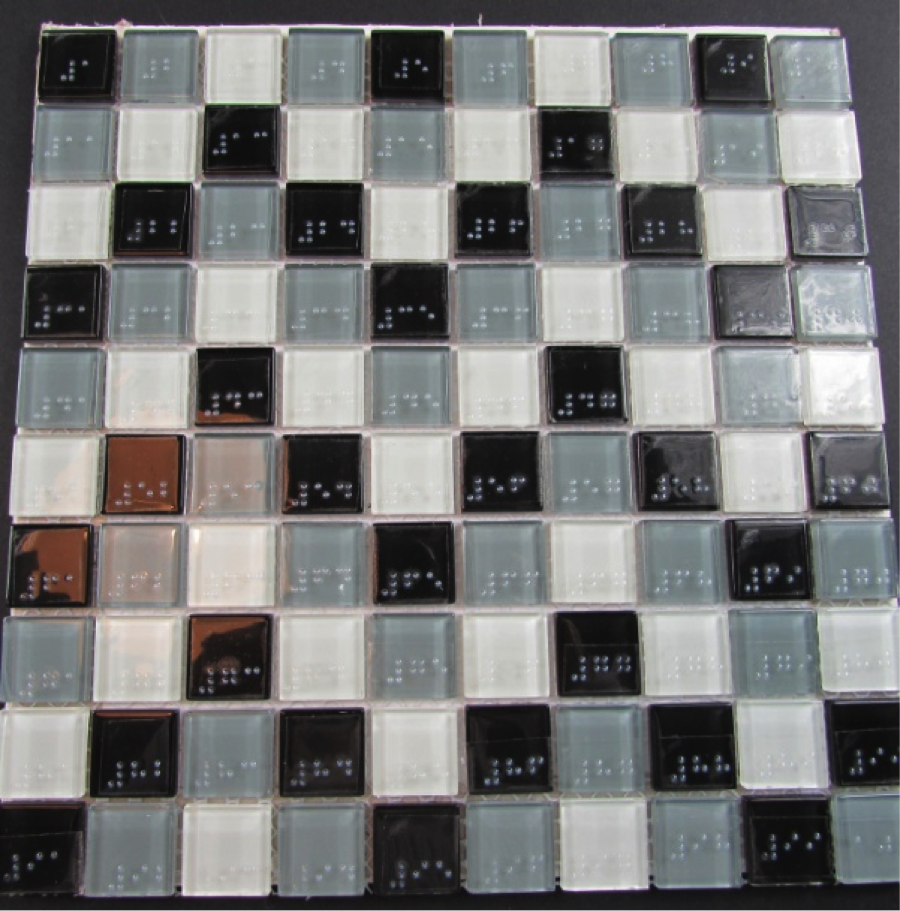
This is an idea shared with Positive Eye by a teacher of VI from Samuel Cody School (UK) who took an idea seen at a Positive Eye course for a number square made with a glass tile and made an equivalent of a cubarithm for a braillist who can't yet accept the idea of cubarithm numbers because they don't have a number sign in front of them.
Materials:
- I mosaic tile (B&Q)
- Sticky back plastic to make braille numbers
- Fridge magnet or magnetic strip
- Oven tray (or cookie sheet)
Procedure:
The tiles are glued to a net back making it possible to cut out tiles individually or in twos. Sticky label sheets (RNIB) were used to stick a number on each tile. As only 3 cells fit on a tile, to make hundreds two tiles were left stuck together. Add, subtract, and equals signs can also be made to enable the child to build their own sum. The tiles can also be used to make fractions.
A small piece of fridge magnet on the back of each tile enables the child to position on a magnetic board.
The squares are kept arranged as a hundred square on a baking tray for ease of use. They are coloured-coded (plus the colours match up to number bonds, i.e. teens and nineties are red, 20s and 80s are green). Numbers can also be added in print to be used inclusively by braillists and print readers.


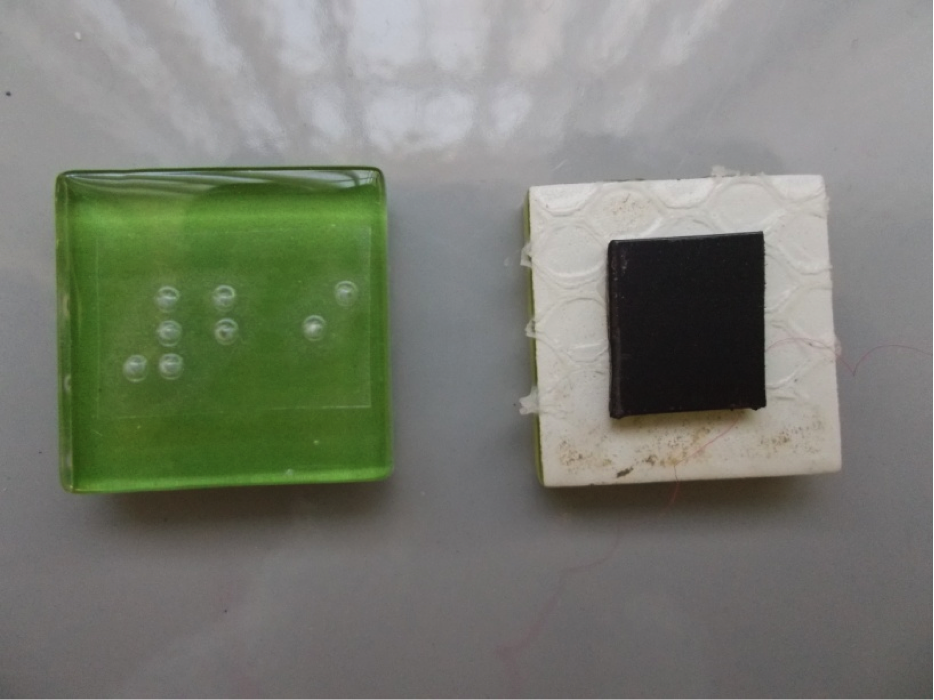
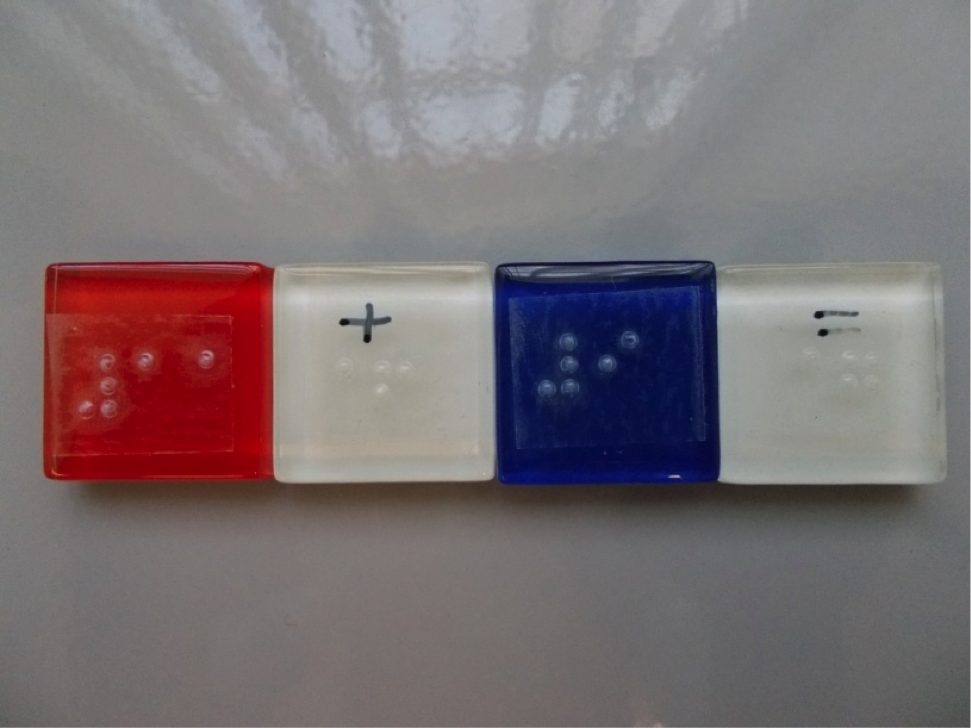
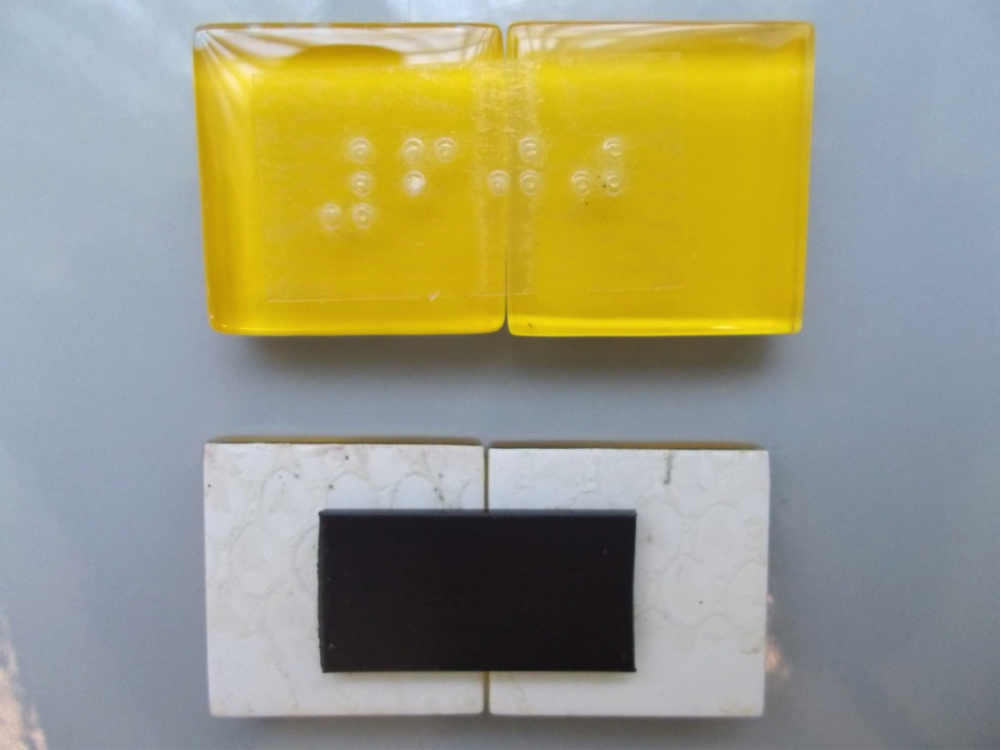
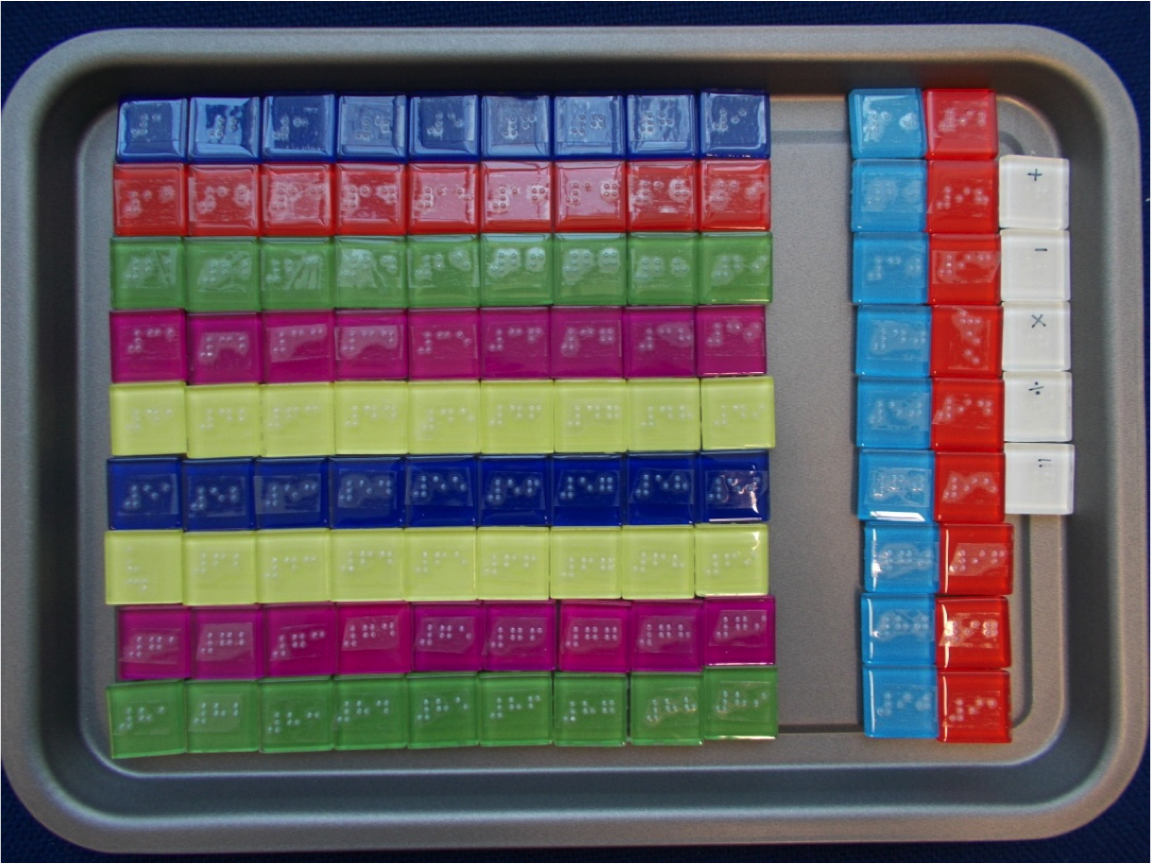
Comments
What a great idea! Excellent